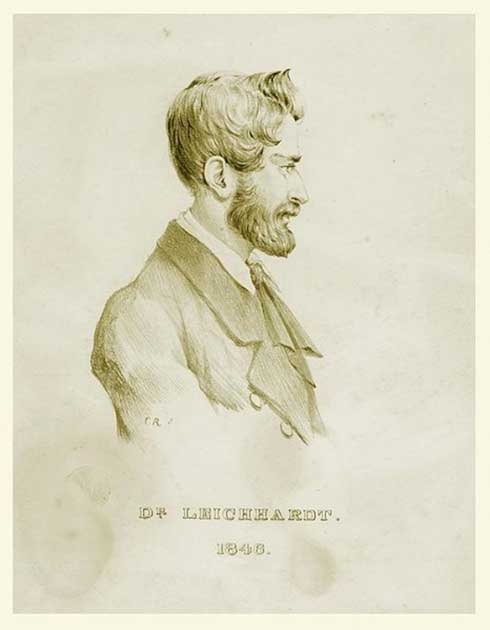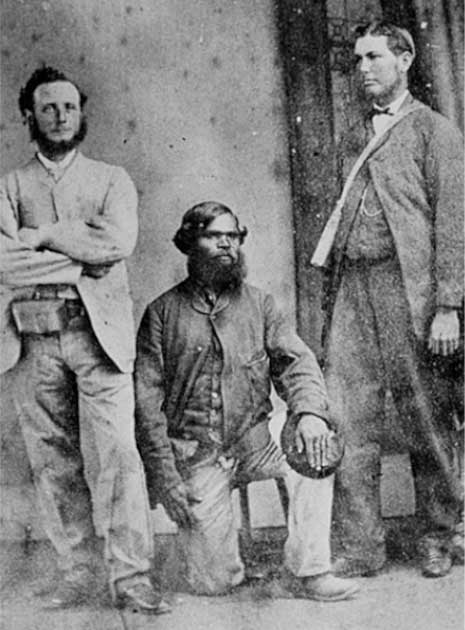While exploring the origins of Australia, one of the most frequently heard names is Ludwig Leichhardt might not be a familiar name to many. He certainly isn’t the first westerner to sight Australia, or to make landfall there.
He did not claim the country for a foreign crown, nor did he seek dominion over the peoples who lived there. But, perhaps more than anyone, his exploration of the Australian interior opened up that great country for others to follow. And for that he is considered to be one of the earliest heroes of Australia.
He embarked on a number of major expeditions into the interior to explore the nation at a deeper level. However, during one of the missions, he vanished into thin air and was never seen or heard from again.
The tragic ending of Leichhardt is regarded to be one of the mysteries of modern eras that is yet to be unearthed. For appreciating the rich and inspiring legacy that Ludwig Leichhardt has left behind, it is necessary to take into account his exploration efforts and dedication, especially in the context of Australia.
Ludwig Leichhardt
Ludwig Leichhardt was a German-born naturalist and scientist who gained fame for his exploration of the Australian countryside. He had studied philosophy, language and natural sciences at several universities of Berlin and Gottingen.
He maintained leather-bound field notes meticulously, which reflected his interest in the exploration of new places. He was a keen observer of the landscapes of Australia, its vegetation and the Aboriginal people who resided in the region. He was keen that his discoveries be preserved in context.

Leichhardt arrived in Australia with the intention to explore the inland regions within the nation. Between 1842 and 1844, the explorer did extensive fieldwork in the Hunter River Valley. He studies diverse elements such as flora, fauna, geological aspects and the farming methods that were adopted by the people.
In spite of facing several challenges during his journey as an explorer, he continued to press on further and further into the interior, and discover new elements and aspects of natural Australia that were unknown to the world.
- Percy Fawcett and the Lost City of Z
- The Great Emu War of 1932: How did Australia Lose a War to Emus?
Throughout his life, he was a part of a number of expeditions to Australia to explore its interiors. His dedication helped him to gain immense popularity within diverse Australian colonies.
What did he Discover?
While exploring the interiors of Australia, Ludwig Leichhardt made a number of important discoveries. During his explorations of northern and central Australia, he discovered that there were extensive areas that could be used for settlement purposes.
His dedicated work also helped in uncovering numerous important waterways that had a major impact on human civilizations. Tirelessly tracking back and forth and scouting the routes of these rivers and streams, Ludwig Leichhardt was able to provide an early map.
He created a thorough and well-detailed map highlighting the route from Moreton Bay to Port Essington in Australia. Due to his immense contribution and success as an explorer, his efforts were identified and acknowledged, and he received several rewards. One of the most prestigious rewards included a portion of the 1847 prize of the Geographical Society of Paris.
Leichhardt has left behind a lasting and inspiring legacy that continues to inspire hundreds of exporters in the contemporary era. He wrote numerous field books, journals, notebooks, and letters which give an in-depth insight into his experiences in Australia. The discoveries that he has made are considered to be extremely precious, and hence his collections and accounts are also deeply valued.
The observation and accounts that have been recorded by Ludwig Leichhardt are believed to be highly accurate. The travelogue that was maintained by Leichhardt is considered to be of high importance even today.
Apart from shedding light on elements such as flora, fauna and landscapes, the explorer has described a number of encounters that he had with indigenous Australians. The early diaries that were maintained by Leichhardt are cherished even today as they represent his rich legacy in the exploration realm.
The Disappearance
While Ludwig Leichhardt was on his third expedition in Australia, he suddenly disappeared, and he was never seen or heard from again. The fate of the explorer is shrouded with mystery as he, along with seven men and their animals (bullocks, mules and horses) vanished in the year 1848.
- Farini’s Great Discovery: Is there a Lost City of the Kalahari?
- Harold Holt: Disappearance of Australia’s Prime Minister
In early April of 1848, Leichhardt set out on his third expedition, which would be his final one. His objective was to reach the Swan River from the Condamine River, crossing Australia from east to west. The explorer moved inland in high spirits, and that was the last time he was seen.
As no specific details have been uncovered since the disappearance, several theories have emerged to try to explain it. Some of the common theories that justify his mysterious disappearance include being killed by Aboriginal people or perishing in harsh environmental conditions. However, the ultimate fate of Ludwig Leichhardt has not been uncovered.
The third expedition was considered to be a risky and ambitious move on the part of the renowned explorer. He was expected to cover 4,500 km (2,750 miles) on horseback in the forbidding and unknown Australian interiors.

However, the members who had taken part in the expedition were experienced explorers, and the authorities were shocked to find they had disappeared without a trace. As Leichhardt was highly respected as an explorer, a number of efforts were made to find him, but the results were not fruitful.
Ludwig Leichhardt succeeded in making a mark for himself in the vast expiation domain by making major discoveries in Australia. His contribution is highly respected by both conventional as well as contemporary explorers.
By going on expeditions in Australia, he helped to give an insight into the landscapes and natural elements. Before he could carry on with his contribution as an explorer, he vanished on his third expedition in Australia.
Even though his sudden disappearance is considered to be a major blow to the exploration of that most mysterious of continents, his contribution has helped him to establish a lasting legacy. The records and documentation that were maintained by Leichhardt are cherished even today and are believed to be highly worthy.
Ludwig Leichhardt has played an instrumental role in shaping the image of Australia that is known to the outside world. By going on challenging expeditions, he has uncovered some of the most intriguing secrets that lay in the interiors of Australia.
Top Image: Ludwig Leichhardt was one of the early pioneer explorers of the Australian interior. Source: IdeaBug, Inc. / Adobe Stock.
By Bipin Dimri